By Steven Smith
Over the River
Objectives: Increase possession skills while training fitness and transition. Increase the ability to defend in small groups.
Set-Up
This activity is designed to increase possession skills while focusing on transition, fitness and defensive pressure. It is perhaps one of the most challenging fitness possession games for a senior level team.
The concept is for two teams to keep the ball for 6-8 consecutive passes and then switch the ball to the next grid over (across the river) in the air to complete a point. The level of difficulty is determined by the space of the possession grid, the intensity and numbers of the opposing team and the distance of the gap between the two possession grids (the river).
Execution
Two possession grids are set up approximately 25 yards by 35 yards in size with a 20-yard gap between the two fields. Three teams of seven are divided evenly with a black group trying to maintain possession in one grid and complete 6 to 8 passes and then send the ball in the air to the yellow team for possession in the next grid over and past the gap (river) space.
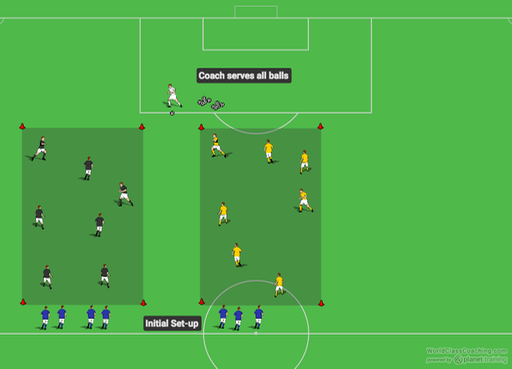
The defenders form the third group and stay outside of the grids until a ball is served by the coach into one of the grids. Once the ball is received by the black team three or four of the defenders must enter the grid to try to break up the possession. If the defenders are able to knock the ball out of the grid, the coach serves to the yellow team and the defenders in that group enter the yellow possession grid to try to knock the ball out of that grid as well.
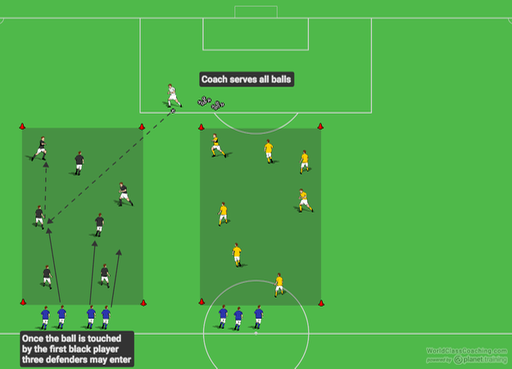
The possession group is successful by completing the 6 to 8 passes (coach's preference on difficulty). Once the predetermined number of passes is achieved the defenders stop but the possession group has a free pass to send to the opposite grid. If the ball does not reach the opposite grid in the air then no point is scored! Once the ball has reached the new grid the cycle of possession and crossing the river continues.

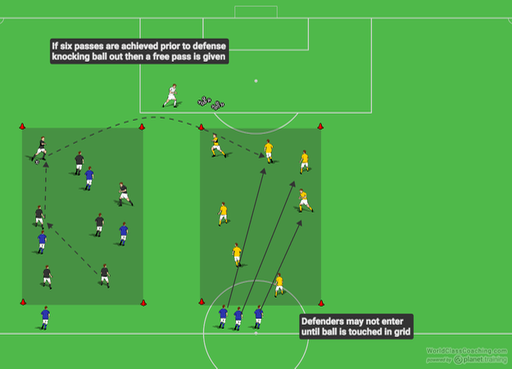
The coach can determine the length of the game by time or by points achieved or number of balls served. Once the end of the game is achieved the defending color group changes with each successive game. A full cycle for the game is three complete games. Always give a reward for the winning team at the end of a three game cycle.
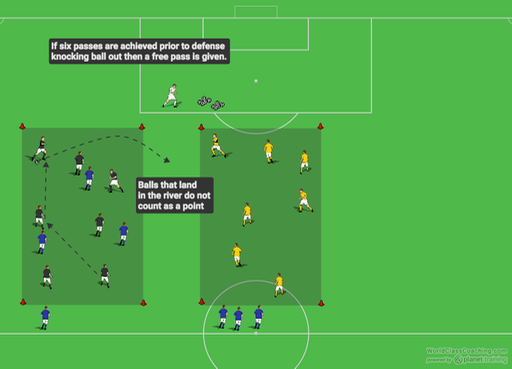
Variations
The group sizes can be uneven and therefore the coach can predetermine how many defenders can enter the grid. The smaller the possession group, the fewer defenders that should be sent into the grid.
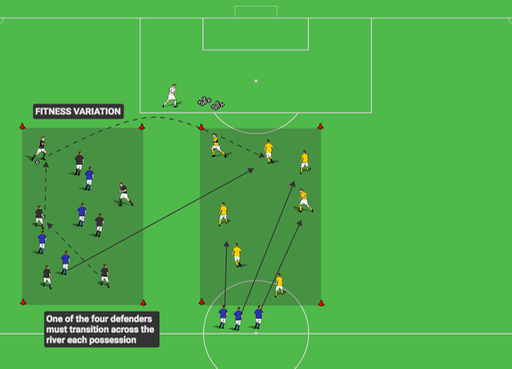
With groups of seven defenders one person on the defensive team may have to cross the river to help defend if groups of four are required to defend in each grid. The coach can make that person make the transition every time or each person on the defensive group can take turns crossing the river to defend.
By Steve Smith
Steve Smith has been a men's college coach that holds an NSCAA Advanced National Diploma and a Doctorate in Physical Education.


